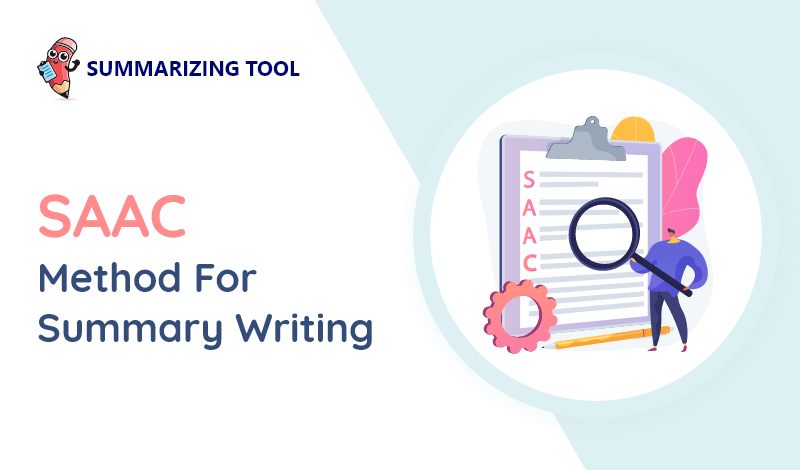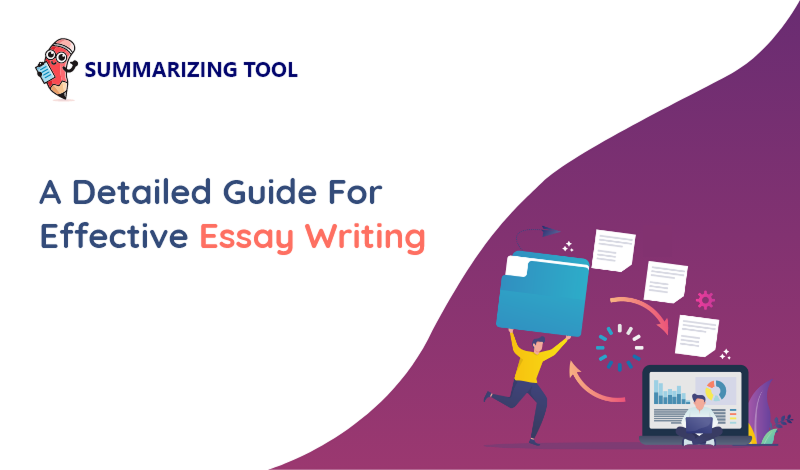
SAAC Method for Summary Writing
May 10What is the SAAC Method?
The SAAC method is a technique that can be used for creating concise and to-the-point summaries. ‘SAAC’ is actually an acronym that stands for ‘State, Assign, Action, Complete’.
All four of these words indicate the four steps that must be followed when creating a summary using this method.
Breakdown of the SAAC Method
Here is a breakdown of the four steps that make up the SAAC method:
State: This is the first step that you have to follow when writing a summary using the SAAC method. ‘State’ here refers to stating the name of the material that you are summarizing.
For example, if you are summarizing a book, you will have to state its full name in quotation marks e.g., “The Gingerbread Man.”
Although it is better to write the name in quotation marks and/or in italics, you can also write it plainly in the same font as the rest of the summary.
Assign: Once the name of the source is mentioned, you will move on to ‘assigning’ the name of the author. Following the example mentioned above, the ‘Assign’ step would entail writing the name of the author like this: “The Gingerbread Man”, by Jim Aylesworth, ...
Action: After mentioning the author, you have to move on to describe the ‘action’ with which the content is conveyed. For example, if we are talking about ‘The Gingerbread Man’, we will say the author ‘tells’ (since it is a story).
Similarly, if we are creating a summary of a technical article or document that contains a lot of expository content, we will say the author ‘explains’.
Following our example above, the ‘Action’ part will look like this (once combined with the rest of the summary): “The Gingerbread Man”, by Jim Aylesworth, tells…
Complete: Once all the above steps are complete, you will have to ‘complete’ the summary by actually describing what happens in the book/article, etc. in detail.
With this step, the summary gets completed. Following the example mentioned above, the completed summary would look something like this.
“The Gingerbread Man”, by Jim Aylesworth, tells the story of a gingerbread man who comes alive. The gingerbread man starts running away from his home. While running, he comes across a cow and a horse, who try to eat him. Then, he reaches a stream where he meets his end at the hands of a fox.
Why is SAAC Method a Good Technique for Professionals and Students?
The SAAC method is a good technique for professionals and students because it provides a fixed procedure that can be followed for creating a summary. In other words, you don’t need to improvise or think of how to start writing the summary. You can just start following the steps one by one.
Since this method gives you an outline of what to begin with, what to include, and how to finish, you can create summaries without worrying about the layout.
For example, with the SAAC method, you will know that you have to mention the name of the book/article/report at the start. Thereafter, you have to write the name of the author and the action with which the content is written/described. And then you have to wrap it up by giving details.
Another reason why this method is good for creating summaries is that it helps in coming up with concise and short results. As you have seen in the example given above, the story was summarized in a brief paragraph.
Professional writers often have to write short synopses for books, articles, and blog posts for use in places like conclusions and snippets, etc. The SAAC method can come in handy in such situations.
How Can the SAAC Method Be Used with Online Summarizing Tools?
Writing summaries manually is good and all, but it can be a whole lot easier if you use an online summarizing tool instead.
Summarizing tool works by taking different sentences from the given text and combining them together to make a brief synopsis. A lot of online tools give you the option of selecting the size of the generated summary by percentage or number of words.
One thing you might have noted with the SAAC method is that after the 'State', 'Assign', and 'Action' steps, the rest of the summary is just a normal precis.
For example, if we were to take the example given above and remove the 'State', 'Assign', and 'Action' steps, we would get something like this:
"… the story of a gingerbread man who comes to life. The gingerbread man starts running away from his home. While running, he comes across a cow and a horse, who try to eat him. Then, he reaches a stream where he meets his end at the hands of a fox."
And that is pretty much what a normal summary looks like.
This helps us understand that if we want to use an online summarizing tool and incorporate the SAAC method in it as well, all we will have to do is insert the name of the source, the author, and the action of the author before the main body (that would have been generated by the tool).
Depending on the type of content that you’re trying to summarize, you may also have to add a couple of lines at the start to make it seem natural.
Conclusion
The SAAC method is a useful technique that can be used by professional and amateur writers for coming up with brief outlines of any article, book, research paper, and so on.
There are four steps in the SAAC method viz. ‘State’, ‘Assign’, ‘Action’ and ‘Complete’. The names of these four steps make up the acronym i.e., SAAC.
This technique can be very useful for creating succinct outlines because it clearly defines the layout and procedure of summarizing the given content.
Following this method, the writer will know to start off by mentioning the name of the source, then move on to writing the name of the author. Afterward, the 'action' of the author is described and then the details of the actual content are given briefly.







